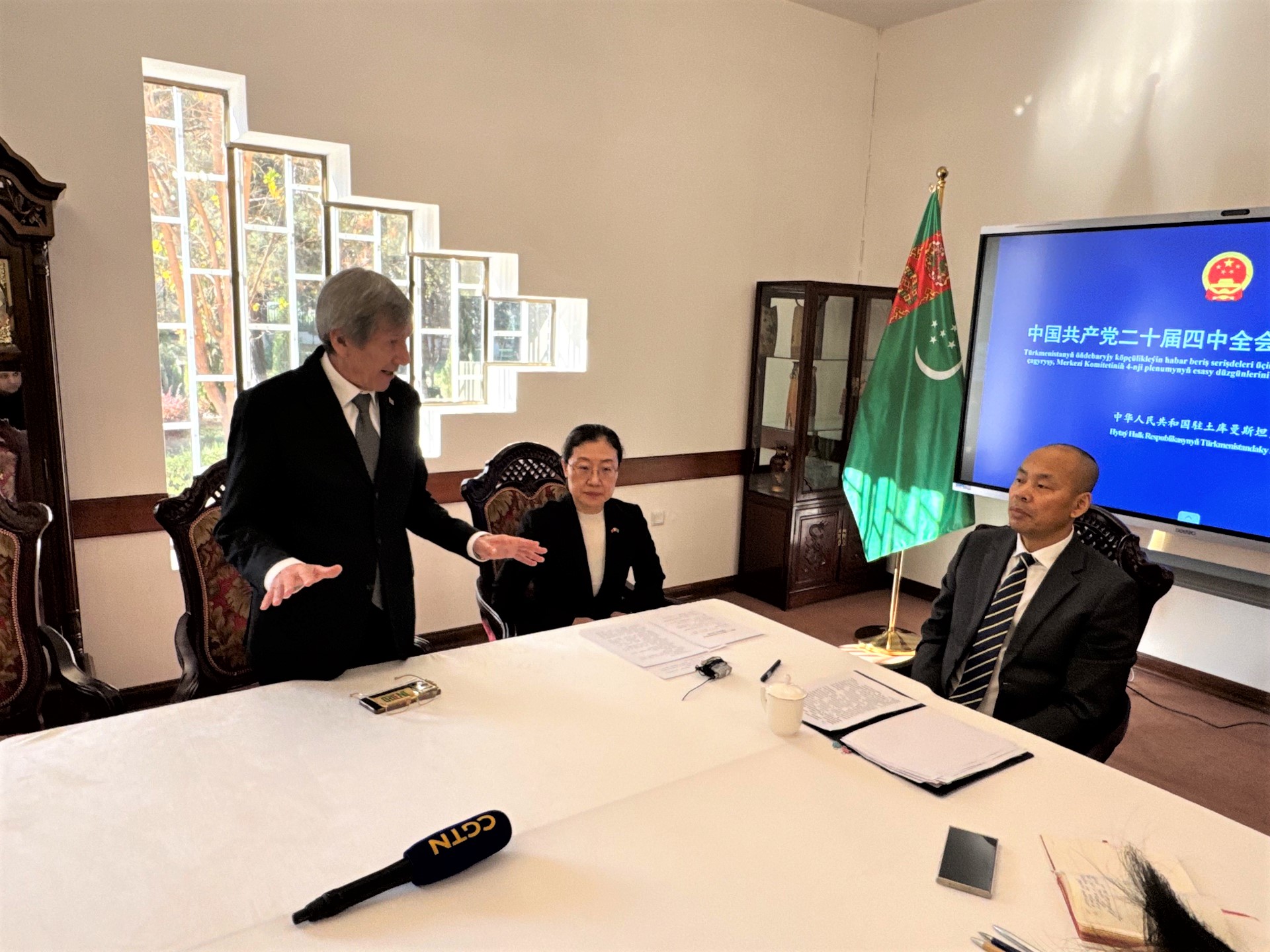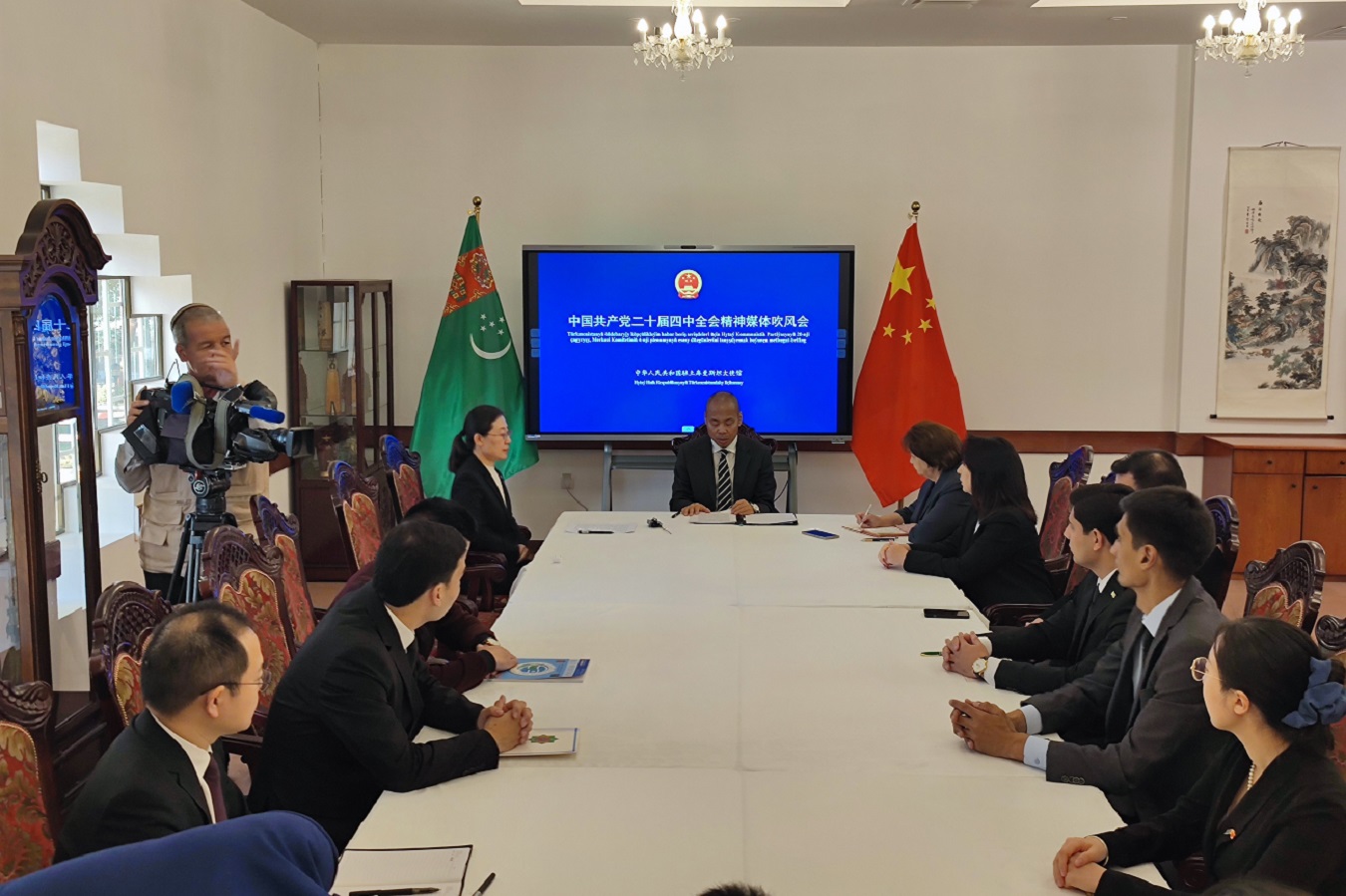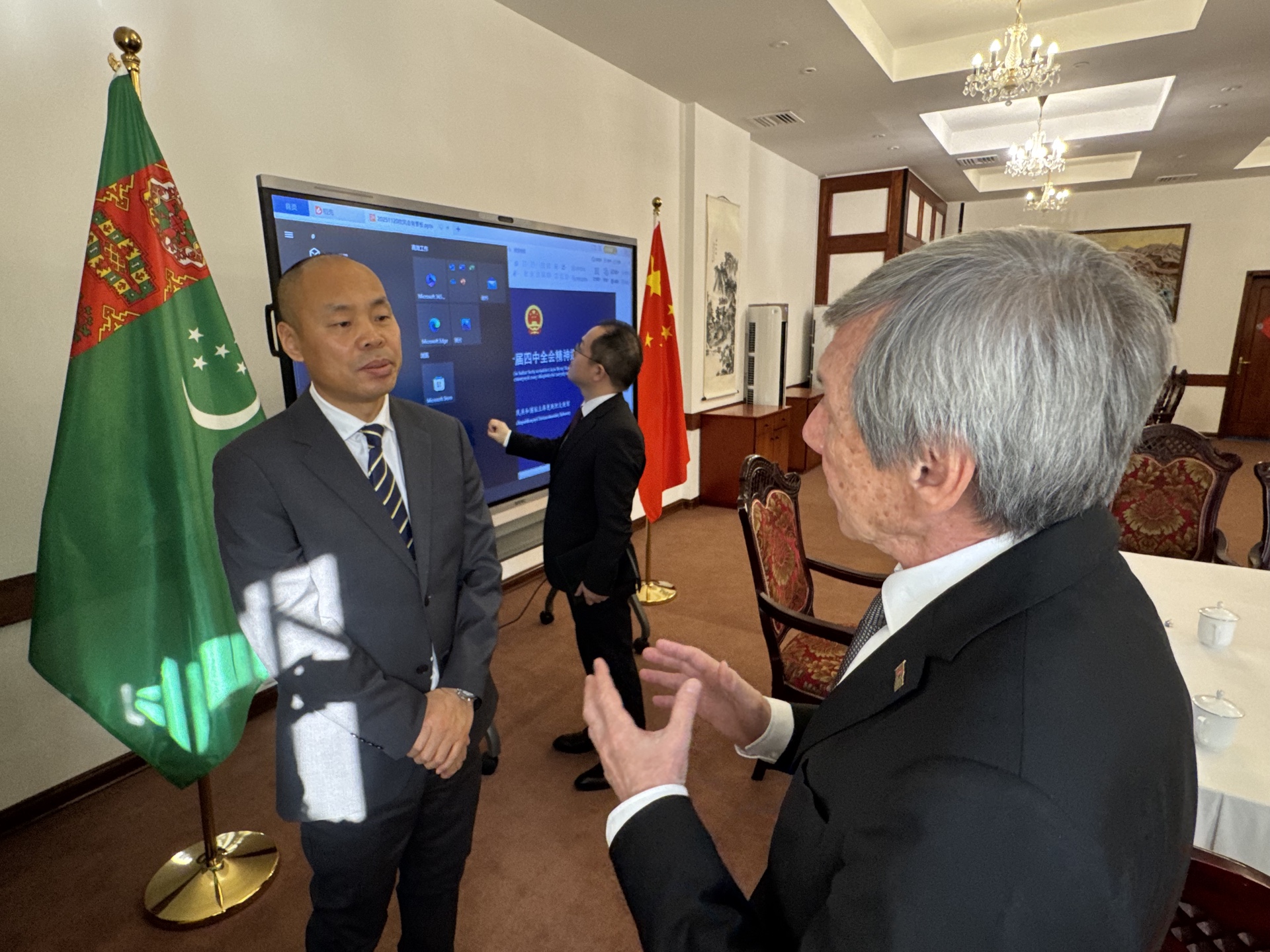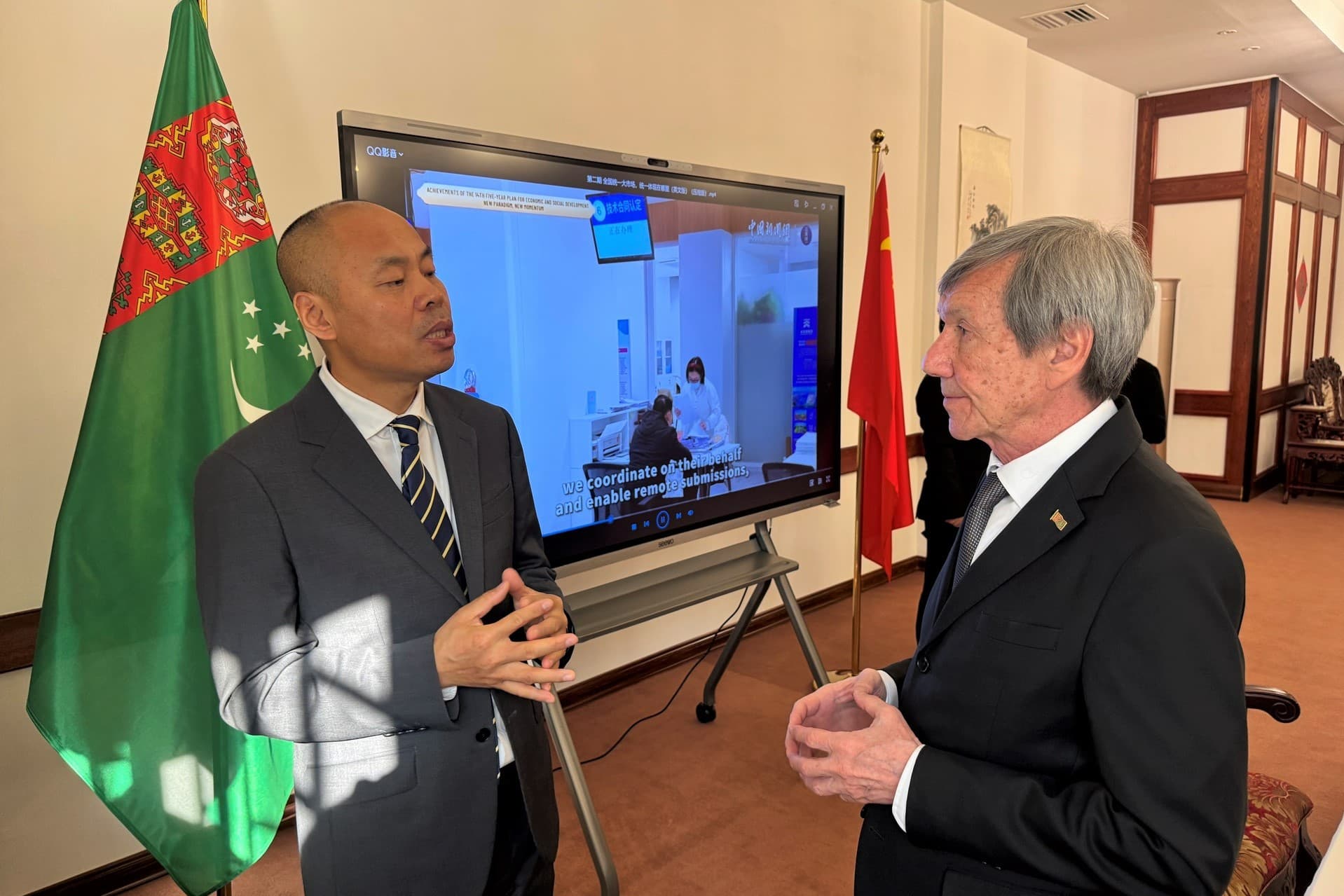
Ashgabat, November 26 | ORIENT. At a media briefing at the Embassy of the People's Republic of China in Ashgabat, key provisions of the recently approved 15th Five-Year Plan (2026–2030) were presented, and new development vectors for the Turkmen-Chinese comprehensive strategic partnership were announced.
Ambassador Extraordinary and Plenipotentiary of the People's Republic of China to Turkmenistan Ji Shumin emphasized that China's new five-year plan opens up broad opportunities for jointly strengthening the community of shared future between China and Turkmenistan.
Regarding bilateral relations, Ambassador Ji Shumin noted that this year, Chinese President Xi Jinping and Turkmen President Serdar Berdimuhamedov held two important meetings, cementing a strategic consensus on developing cooperation.
"Thanks to the strategic leadership of the two heads of state, the alignment of China's Belt and Road Initiative and Turkmenistan's Revival of the Great Silk Road strategy is continually yielding new results," the Ambassador stated, emphasizing the fundamental nature of the partnership.

The foundation for further deepening relations is:
Trade leadership – China has consistently maintained its status as Turkmenistan's largest trading partner for 14 years. Bilateral trade volume in 2024 reached an impressive $10.6 billion;
Complementarity – the economies of the two countries are highly complementary and share similar ideas, making them reliable partners on the path to modernization.
Focus on Innovation and Diversification
During the 15th Five-Year Plan period (2026–2030), cooperation will expand beyond traditional sectors. The Ambassador announced new opportunities for collaboration in promising areas such as energy and transport; communications and the digital economy; e-commerce; and green development.
China is ready to share development opportunities with Ashgabat at a higher level, deepening high-quality cooperation within the Belt and Road Initiative, which will bring even greater benefits to the peoples of both countries.

The 15th Five-Year Plan: A Foundation for Global Stability
The bulk of the briefing was devoted to a review of the 14th Five-Year Plan and the strategic goals approved at the Fourth Plenary Session of the 20th CPC Central Committee. The Ambassador emphasized that China's plans are designed to bring needed certainty to a complex international environment and serve as a reliable source of growth for the entire world.
China's Key Strategic Goals for the 15th Five-Year Plan Period Are:
1. High-quality development. Achieving tangible results, strengthening the real sector of the economy and forming a modern production system.
2. Scientific and technological independence. A significant increase in the level of self-sufficiency, the creation of productive forces of a new quality.
3. Openness and reform. Further comprehensive deepening of reforms and systematic expansion of openness at the institutional level.
4. Social well-being. Continuous improvement in the quality of life of the people and confident steps towards shared prosperity.
The Ambassador noted that China, economy of which continues to demonstrate resilience (its share of global GDP is approximately 17%, with an average annual contribution to global growth of 30%), is ready to share with its partners the vast market opportunities offered by its extremely large domestic market and green transformation.

Global Dividend: How China's Successes Serve the Community of Shared Destiny
The successful implementation of China's large-scale five-year programs, supported by breakthrough innovations and advances in science and technology, has a direct positive impact on the global economy. By achieving its economic modernization goals, China is not only a key driver of global growth but also a stable source of "development dividends." This principle of mutual benefit and shared prosperity underpins the concept of the Community of Shared Destiny for Humanity.

In the context of relations with Turkmenistan, this global approach is manifested in the most concrete way: access to advanced Chinese technologies in the digital economy, communications, and green development allows Ashgabat to accelerate its own modernization within the framework of the "Revival of the Great Silk Road" strategy. Beijing's strategic planning thus becomes a reliable foundation for deepening trust, expanding cooperation, and achieving shared prosperity for the peoples of the two countries.

